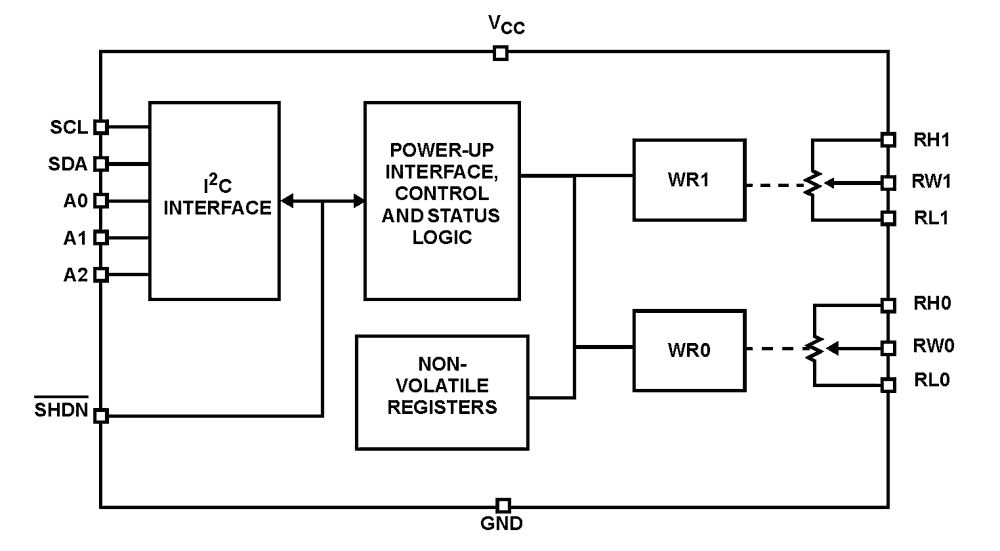封装信息
| CAD 模型: | View CAD Model |
| Pkg. Type: | TSSOP |
| Pkg. Code: | MPK |
| Lead Count (#): | 14 |
| Pkg. Dimensions (mm): | 5.00 x 4.39 x 0.00 |
| Pitch (mm): | 0.65 |
环境和出口类别
| Moisture Sensitivity Level (MSL) | 1 |
| Pb (Lead) Free | Yes |
| ECCN (US) | EAR99 |
| HTS (US) | 8542.39.0090 |
| RoHS (ISL22326WFV14Z) | 下载 |
产品属性
| Lead Count (#) | 14 |
| Carrier Type | Tube |
| Moisture Sensitivity Level (MSL) | 1 |
| Pitch (mm) | 0.7 |
| Pkg. Dimensions (mm) | 5.0 x 4.4 x 0.00 |
| Pb (Lead) Free | Yes |
| Pb Free Category | Pb-Free 100% Matte Tin Plate w/Anneal-e3 |
| Temp. Range (°C) | -40 to +125°C |
| Country of Assembly | MALAYSIA |
| Country of Wafer Fabrication | SINGAPORE |
| Advanced Features | 3 terminal DCP with 6 bytes general purpose EEPROM |
| Channels (#) | 2 |
| End-to-End Temperature Coefficient (ppm/°C) | 50 |
| Interface | I2C |
| Length (mm) | 5 |
| MOQ | 1920 |
| Memory Type | Nonvolatile |
| Middlepoint Ratiometric Tempco | 4 |
| Pkg. Type | TSSOP |
| Price (USD) | $1.56358 |
| Qualification Level | Standard |
| Resistance Options (kΩ) | 10 |
| Resistance Taper | Linear |
| Single Supply Voltage Range (V) | 5.5 |
| Supply Current Icc (µA) | 5 |
| Supply Voltage Vcc (Min) (V) | 2.7 |
| Supply Voltage Vcc Range | 2.7 to 5.5 |
| Taps (#) | 128 |
| VL Terminal Voltage (Max) (V) | 5.5 |
| Width (mm) | 4.4 |
| Wiper Current (mA) | 3 |
| Wiper Resistance (ohms) | 70 |
有关 ISL22326 的资源
描述
The ISL22326 integrates two digitally controlled potentiometers (XDCP) and non-volatile memory on a monolithic CMOS integrated circuit. The digitally controlled potentiometers are implemented with a combination of resistor elements and CMOS switches. The position of the wipers are controlled by the user through the I2C bus interface. Each potentiometer has an associated volatile Wiper Register (WR) and a non-volatile Initial Value Register (IVR) that can be directly written to and read by the user. The contents of the WR controls the position of the wiper. At power-up the device recalls the contents of the two DCP's IVR to the corresponding WRs. The DCPs can be used as three-terminal potentiometers or as two-terminal variable resistors in a wide variety of applications including control, parameter adjustments, and signal processing.
